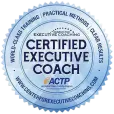
Decision-Making from the Battlefield
This morning, I was reading The Art of War and read this:
“No evil is greater than commands of the sovereign from the court.”
Sun Tzu warns against leaders making decisions far removed from the realities of the battlefield. For small business owners, you need to remember this: the further you are from the people closest to the action—your employees and customers—the more likely your decisions will miss the mark.
Imagine Turning Pages, a small-town bookstore with overstuffed armchairs, shelves brimming with stories, and handwritten notes from the staff tucked under customer favorites. It’s a place where readers linger and community connections thrive. Then, the owner decides to replace the much-loved “Staff Picks” section with a display of bestsellers, thinking it will increase sales.
The result? Customers aren’t happy. They loved the personal touch of staff recommendations and used the section to discover books they wouldn’t have found otherwise.
Sun Tzu’s wisdom reminds us that the best decisions come from listening to the people who are on the frontlines—those who truly understand what’s happening. Let’s explore how this principle can guide your small business.
Trust the People Who Know Your Customers Best
Your Employees See What You Don’t
Your employees spend their days interacting with customers, hearing their questions, and noticing patterns. Their observations are invaluable for understanding what’s working and what could be better.
Example: At Turning Pages, employees noticed that customers frequently lingered in the local author section, asking for suggestions. Working with a local business, Sunbeam Press, they created a feature wall called “Local Treasures,” highlighting books by authors from the area, complete with handwritten blurbs and space for customer reviews. The new display not only increased sales but also strengthened Turning Pages’ reputation as a supporter of the local literary community.
What to Do:
- Ask your employees what trends, questions, or preferences they’re noticing from customers.
- Encourage them to suggest small changes, like curating displays or adjusting inventory, and give them the freedom to implement ideas.
Challenge: What’s one way you could let your team take the lead this week?
Your Customers’ Feedback Holds the Answers
Ask, Listen, and Act
Customers are full of ideas about what they want—sometimes you just need to ask. By paying attention to their feedback and acting on it, you can create a business that better meets their needs.
Example: Customers at Turning Pages often mentioned they wanted a way to connect with fellow readers. Instead of creating a quiet reading nook that might take up valuable retail space, the owner partnered with Tea & Whimsy, a nearby tea shop, to host a weekly Community Book Club. Attendees gather at the tea shop to discuss a featured book, with copies available for purchase at Turning Pages. The collaboration deepened customer relationships and drove sales for the selected titles.
What to Do:
- Use surveys, comment cards, or casual conversations to gather customer feedback.
- Look for recurring themes in what customers say and prioritize ideas that align with your goals.
Challenge: What’s one piece of customer feedback you’ve heard recently that you can act on this month?
Data is Helpful, But Context is Everything
Pair Numbers with Real Stories
While sales data can tell you what’s happening, it doesn’t explain why. Combining data with input from employees and customers gives you a fuller picture and leads to better decisions.
Example: Cookbook sales at Turning Pages had been flat for months. After speaking with staff and customers, the owner realized that people often felt overwhelmed by the options. To address this, they collaborated with Hearthstone Bistro to host a cooking demonstration using recipes from a popular cookbook. Customers loved the interactive experience, which introduced them to new titles and drove sales of the featured books.
What to Do:
- Use data to identify opportunities but rely on employee and customer insights to provide context.
- Spend time observing customer behavior or asking direct questions to uncover the “why” behind the numbers.
Challenge: Spend an hour this week talking to your employees or customers. What hidden opportunities could you uncover by hearing their stories?
Open Communication Creates New Opportunities
When Ideas Flow, Everyone Wins
Top-down decision-making can overlook great ideas. When you create space for employees to share their insights, you tap into a well of creativity and innovation.
Example: During a team feedback session at Turning Pages, an employee suggested hosting a “Books & Brews” event in collaboration with Wild River Brewing. The evening featured a local author reading, paired with craft beer tastings. The event improved sales of the author’s books and brought in new customers, many of whom became regular visitors.
What to Do:
- Hold regular team meetings or brainstorming sessions where employees can share their ideas.
- Use tools like Slack or Trello to organize feedback and suggestions.
Challenge: Schedule a team brainstorming session this month. What new ideas could emerge?
Compete by Making Your Business Better
Respond to Trends Without Copying Competitors
When competitors introduce new offerings, it’s tempting to copy their strategy. But the smarter approach is to use the insight to make your business even better.
Example: When a competing bookstore launched a loyalty program offering discounts and perks, Turning Pages responded by creating the “Turning Pages Circle.” Members received benefits like early access to book launches, exclusive discounts, and invitations to private author events. The program didn’t just mirror the competitor’s idea—it enhanced the customer experience, emphasizing Turning Pages’ focus on personal connections and unique offerings.
What to Do:
- Look for trends or competitor strategies and think about how you can improve on them in a way that aligns with your brand.
- Focus on enhancing the customer experience, not just matching what others are doing.
Challenge: What’s one competitor strategy you could respond to by making your business better for your customers?
Small Businesses Have the Edge
Small businesses have a unique advantage: they’re closer to their employees and customers. This proximity makes it easier to identify opportunities and act quickly.
Example: The owner of Turning Pages noticed customers frequently asking for gift ideas during the holidays. Working with Winterberry Candle Co., the bookstore created holiday gift bundles featuring books, candles, and custom bookmarks. The bundles became a customer favorite and helped Turning Pages stand out as a thoughtful, community-focused shop.
What to Do:
- Spend time on the floor observing and listening to your customers.
- Use your small size as an advantage to make decisions faster than larger competitors.
Challenge: What’s one customer need you could meet immediately by collaborating with a local partner?
Empower, Listen, Adapt: The Path to Smarter Decisions
Sun Tzu reminds us that detached decision-making rarely succeeds. The best choices come from being in the thick of things—talking to your team, hearing your customers, and understanding what’s really happening day to day. When you empower the people closest to the action, listen to their insights, and adapt based on what you learn, you’re not just making better decisions—you’re building a stronger, more connected business.
Imagine a business where your team feels trusted to make meaningful contributions, your customers know their feedback matters, and every decision you make is rooted in what’s actually happening, not just what you think is happening. That’s the kind of business that grows not just in size, but in impact, resilience, and community loyalty.
Your Next Steps:
- Look for one decision you can hand over to your team this week. Trust them to take the lead and see what they come up with.
- Act on a recurring piece of feedback you’ve heard from your customers. Even a small change can make a big difference.
- Spend an hour with your team or your customers, just observing and asking questions. You might be surprised by what you learn.
The strongest businesses aren’t built on guesswork or assumptions—they’re built by staying connected to the people who make it all work. Empower your team, listen to your customers, and adapt with intention. That’s how you create a business that lasts.




